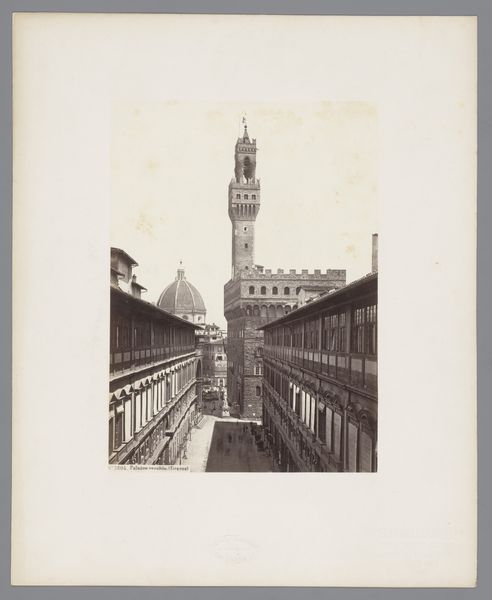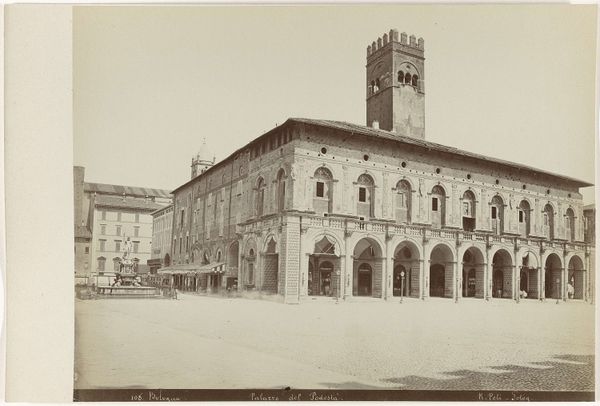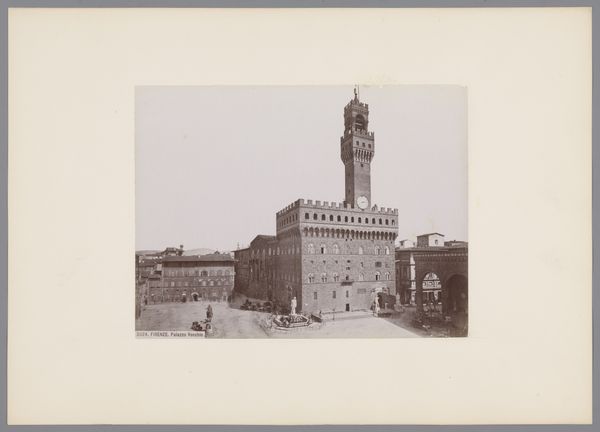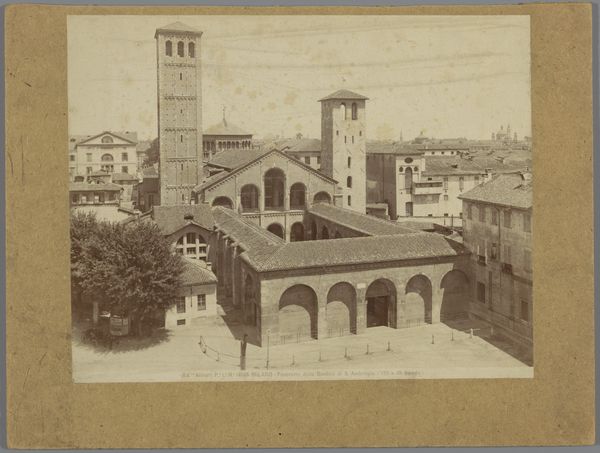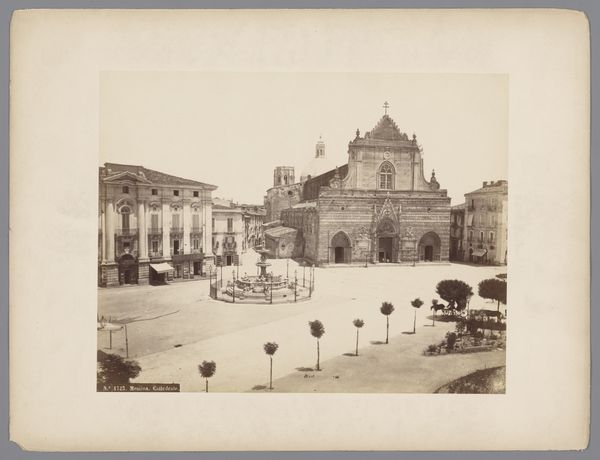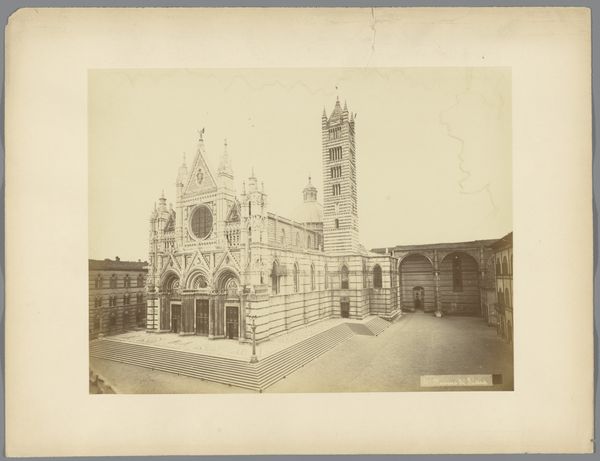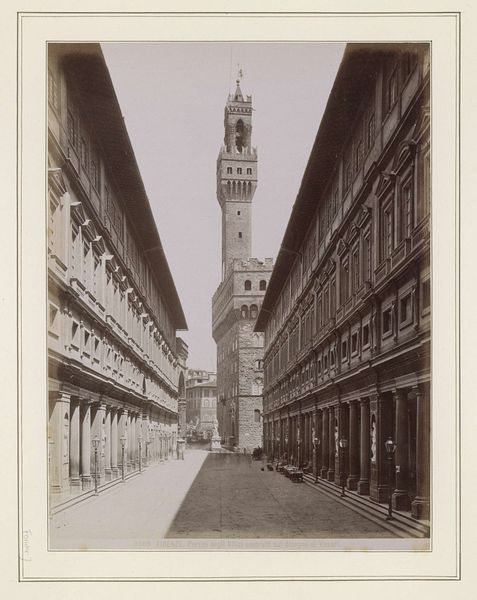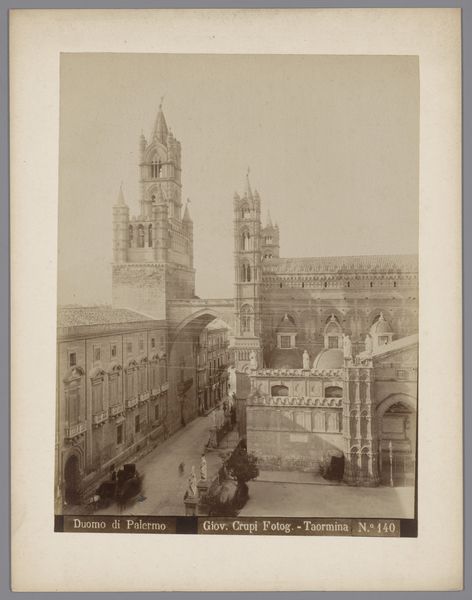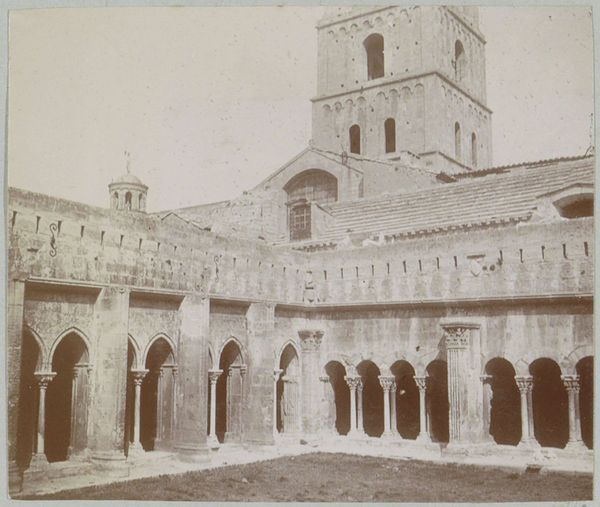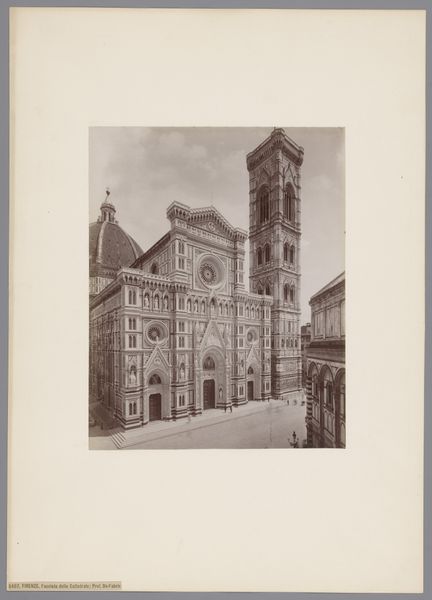
photography, gelatin-silver-print
#
photography
#
gelatin-silver-print
#
cityscape
#
realism
Dimensions: height 196 mm, width 247 mm, height 270 mm, width 352 mm
Copyright: Rijks Museum: Open Domain
Curator: We're looking at a photograph by Giacomo Brogi, "Gezicht op het Piazza del Duomo en de kathedraal van Pistoia," a gelatin-silver print, created sometime between 1864 and 1881. Editor: It’s quite striking. The rigid architectural lines, softened by the silver gelatin, give the image an ethereal quality. There is this sense of agelessness of the structures; they seem almost imposed upon the photograph, unconcerned by it. Curator: I find it compelling as a document of a specific place and time. Brogi was a very successful commercial photographer, catering to the growing tourist trade, allowing folks to take the City home with them, so to speak. He helped solidify particular views of Italian identity on the international stage. Editor: Absolutely. Consider the Piazza itself. Its design intentionally emphasizes civic and religious authority. We see the cathedral looming with a strong bell tower and clock faces and imposing building nearby, asserting dominance over public life through the stone and meticulously maintained symmetry. The little monument there in the center must have symbolic value as well, beyond aesthetics. Curator: Undoubtedly. But how fascinating it is to see the photograph framed as a sort of precursor to the modern postcard! This single photograph then has ripple effects on popular understanding and tourism. These Italian monuments weren't just architectural marvels, they become marketable signifiers of Italian culture itself, commodified for the masses. Editor: Yes, I agree. Looking closer, that monument acts as an interesting visual anchor for those themes. It is of a deity, possibly Justice. And these virtues would then, by design, trickle outwards, a constant visual reinforcement of the powers at play, a stone hieroglyph of order and civilization in contrast to more dangerous impulses of the time. Curator: Which makes Brogi’s work a testament not only to architectural preservation but also to the strategic presentation of Italian heritage during a pivotal period of nation-building. It shows how these places have historically been made significant for political and social reasons. Editor: Brogi gives us not just a scene, but also invites us to ask probing questions of time and collective meaning; questions we continue to consider as interpreters of public symbols.
Comments
No comments
Be the first to comment and join the conversation on the ultimate creative platform.
